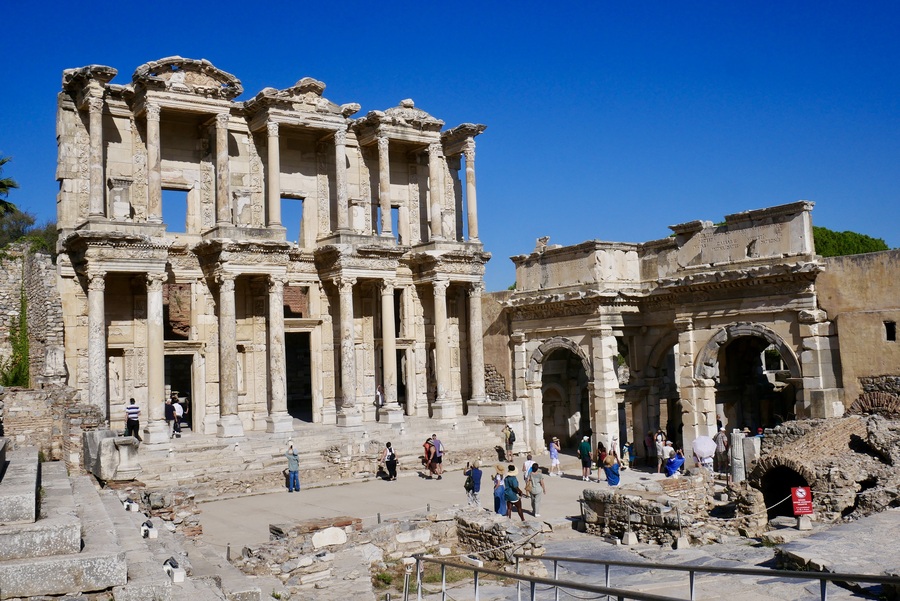
Guide to Ephesus Turkey and its Surroundings
Ephesus Turkey offers a captivating window into Greco-Roman civilization. Once a thriving metropolis, Ephesus was an important center for culture and trade during its heyday.
Today, the ancient city on Turkey’s western coast stands as one of the best-preserved archaeological sites in the world.
Walking through its marble-paved streets—past towering columns and the iconic Library of Celsus—transports you back to a time when Ephesus was not only a center of learning and trade, but also an important place in early Christian history.
The Ephesus Archaeological Site
If you tend to think of ruins as nothing more than old rock piles, you may be surprised by Ephesus’ incredible wealth of artistry and detail. Its ruins are some of the best preserved in the eastern Mediterranean—comparable to those of Athens, Baalbek and Palmyra.

Ephesus is one of Turkey’s top tourist destinations, alongside Cappadocia, Istanbul and Pamukkale. It is a popular stop along Turkey’s well-trodden tourist trail, as well as the top destination for cruisers disembarking at Kuşadası port.
Despite its grandeur, more than 80% of the Ephesus archaeological site remains uncovered.
I can only imagine what the city must have looked like in its glory days.
Things to See in Ephesus
Ephesus’ main archaeological sites line Curetes Street, a marble road that connects Hercules Gate and the resplendent Celsus Library.
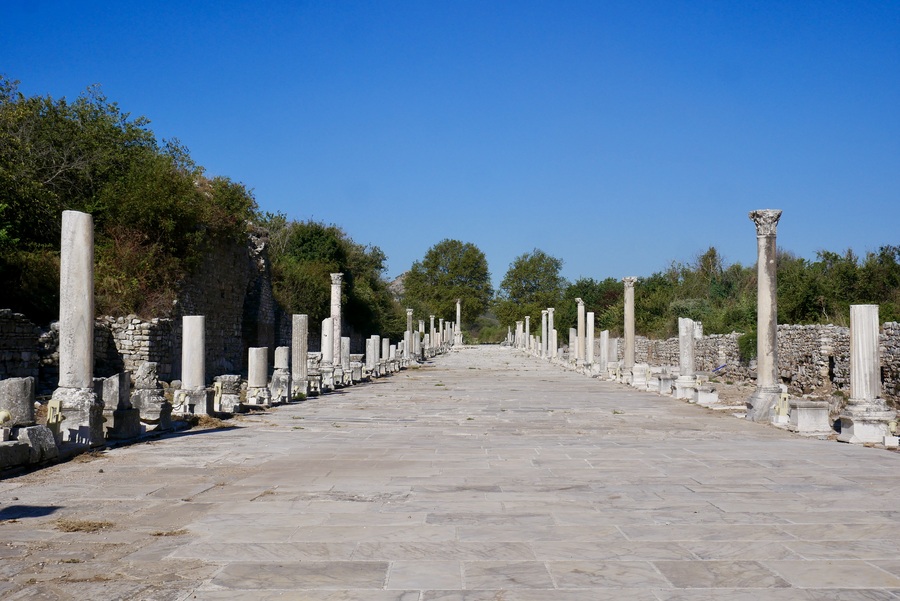
Along Curetes Street, you’ll see the most prominent Ephesus attractions—including theaters, temples, ancient lavish villas,
The Library of Celsus
If you’ve seen pictures of Ephesus, chances are that the photos feature the archeological site’s ancient library. The iconic Library of Celsus once housed thousands of scrolls and served as a symbol of the city’s intellectual prominence.
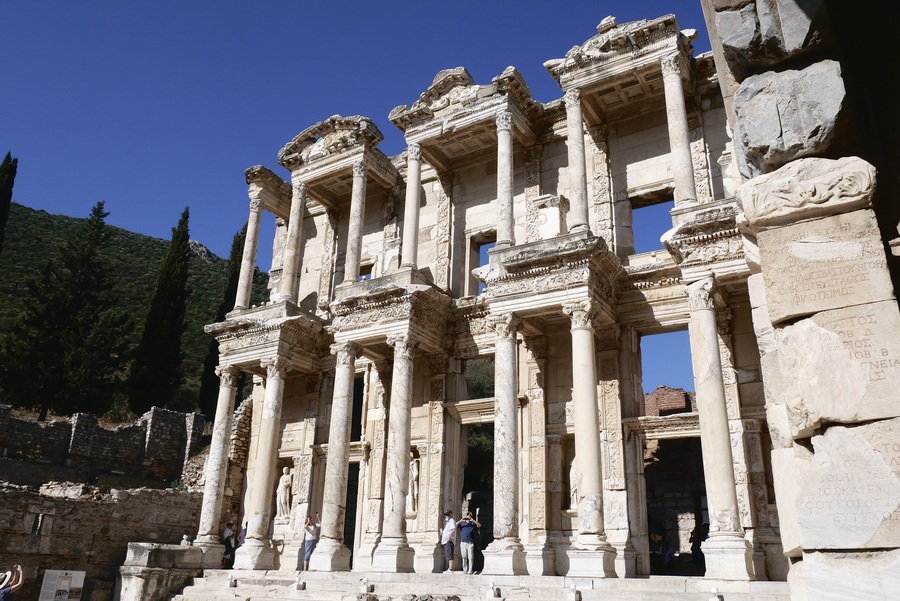
Constructed in the 2nd century AD, it was named after the city’s former Roman governor.
Today, only the library’s impressive facade remains, though you can still see some of the building’s intricate stonework. The library is a silent witness to the city’s stature as a great center of learning and early Christian scholarship during the Roman period.
The Great Theater
Beyond the main Ephesus entrance, the Great Theater of Ephesus is the first major ruin that you’re likely to come across. The semicircular structure looks out over the city’s Harbor Road and lies adjacent to the ancient Agora.
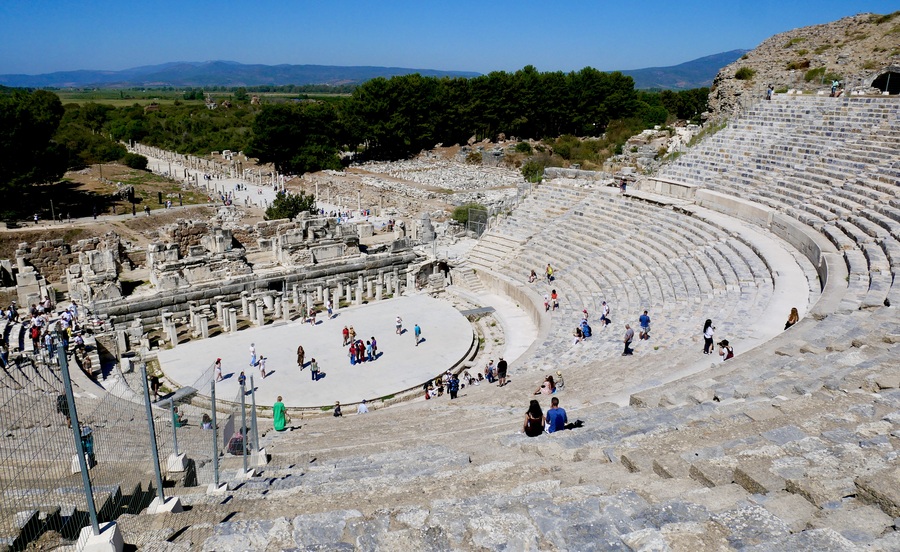
The grandeur of the Great Theatre reflects the city’s influential status as a cultural and political hub in the ancient world. At its height, Ephesus’ Great Theater could accommodate 25,000 spectators.
The Great Theater of Ephesus dates back to the Hellenistic Period in the 3rd century BC. However, it underwent large renovations and expansions in subsequent centuries under Roman rule.
The Odeon Theater
The Odeion of Ancient Ephesus is a small semi-circular theater that was constructed roughly 500 years after the Great Theater.
It functioned as both a senate meeting place and a concert hall for performances.
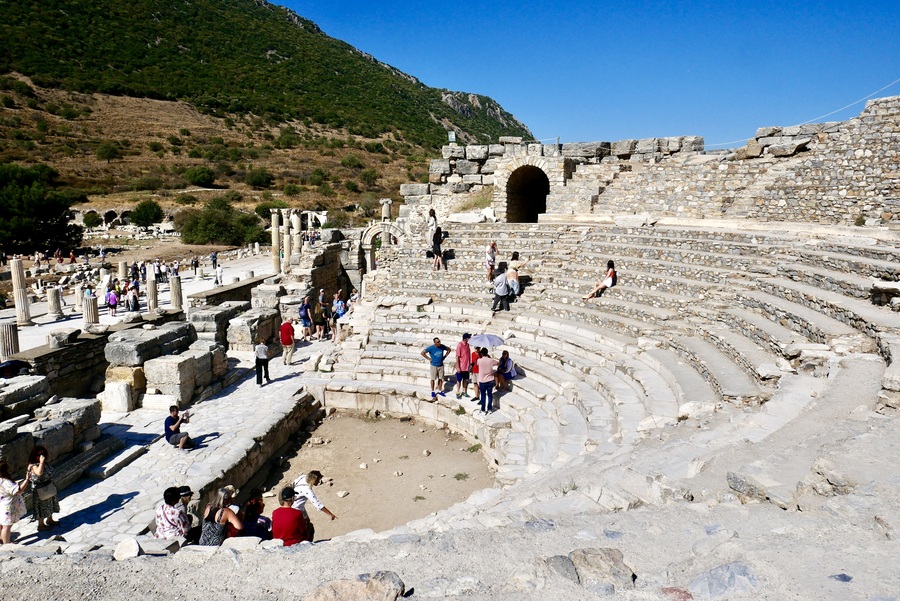
The semi-circular building had a capacity for 1500 spectators.
Temple of Hadrian
The Temple of Hadrian is one of the most beautiful ruins along Curetes Street in Ephesus. Dedicated to Emperor Hadrian, its artistry and detail resembles that of the world-renowned Celsus Library.
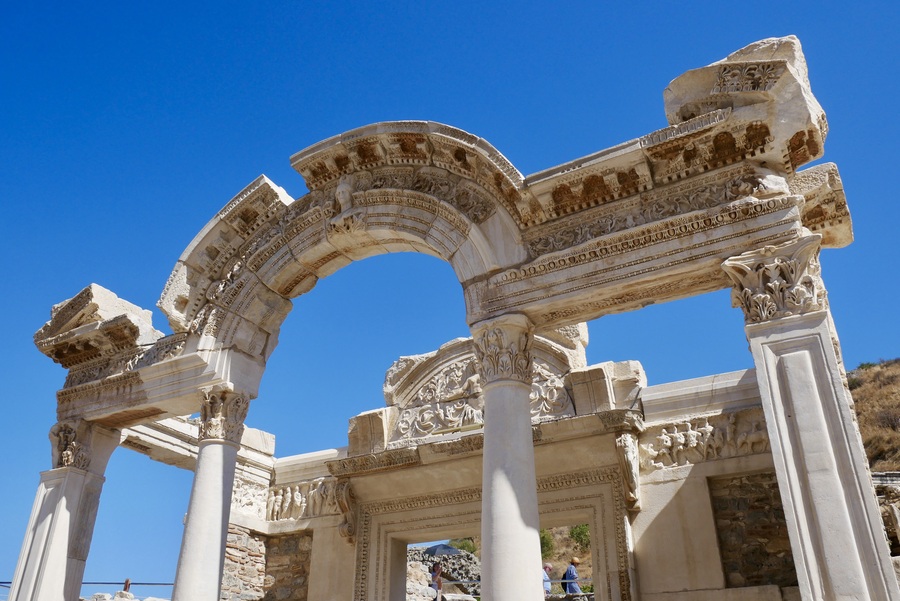
The facade of the temple has four Corinthian columns that support a decorated arch. The center of the arch contains a carved relief of Tyche, goddess of victory.
The Terraced Houses
The Terrace Houses of Ephesus lie opposite to the Temple of Hadrian. So far, two housing complexes—Eastern and Western—have been excavated.
Several wall paintings in the Terrace Houses offer an insight into the everyday life of the inhabitants.
The excavation work of the Terrace Houses started in 1960 and their restoration is an ongoing process.
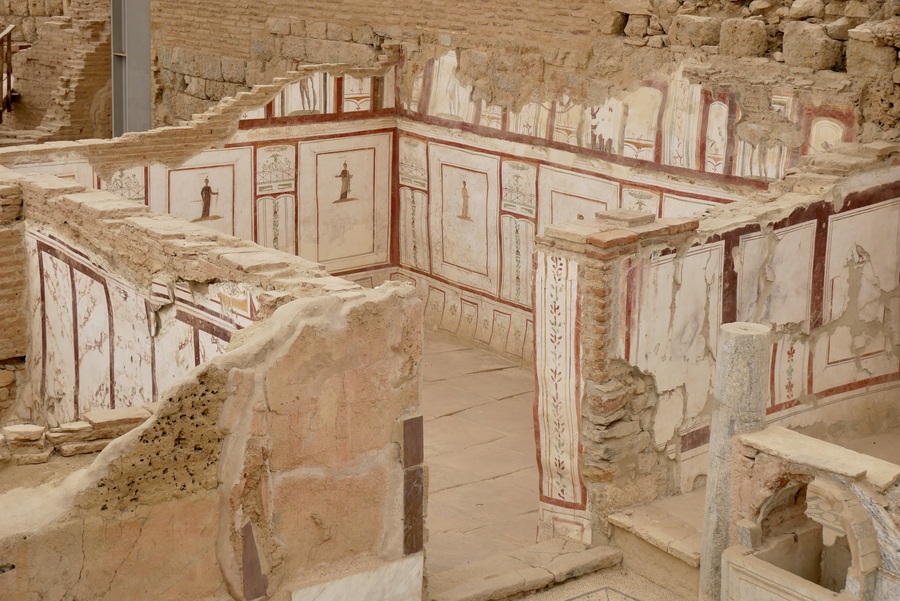
You can access some of the villas of Ephesus with a supplementary entrance ticket. Entrance to the Terraced Houses is well worthwhile. I found the paintings to be incredibly well preserved—comparable to those in Italy’s Pompeii.
Additional Things to Do in Selçuk Turkey
The Ephesus ruins are, undoubtedly, Selçuk’s main tourist draw. They are a UNESCO World Heritage Site and among the most beautiful ancient archaeological sites in the Mediterranean.
While you’re in the area, however, you’d be remiss to skip over some of the other great attractions nearby.
The Basilica of St John
The Basilica of St. John, a must-see Selçuk attraction, was built during the reign of Byzantine Emperor Justinian I. The ruins lie above what was believed to be St. John the Apostle’s burial chamber. When first constructed, the structure was a simple mausoleum-like building that also served as a church. Then, during the reign of Emperor Justinian (527 -565 AD) it transformed into a marvelous basilica.
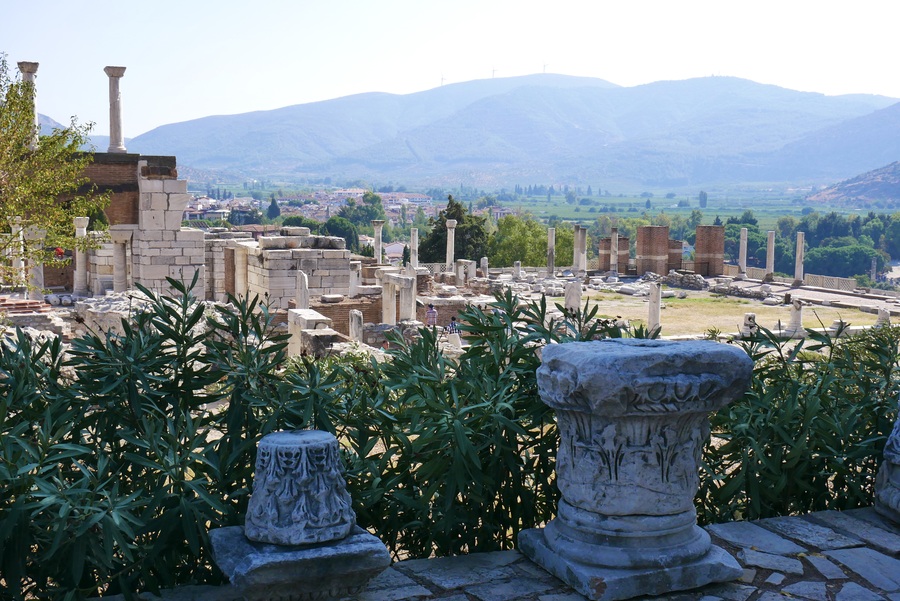
You can easily access the basilica on foot from downtown Selçuk. Just a stone’s throw away, you’ll find the Selçuk Citadel and Isa Bey Mosque.
Selçuk Citadel
The fortress of Selçuk bears an active history that dates back to the Ottoman period. It lies at the top of Ayalusuk Hill, overlooking the remnants of the Temple of St John.
The citadel of Selçuk encompasses several important structures, including a royal palace, water cisterns, a small mosque and residential houses for notable people.
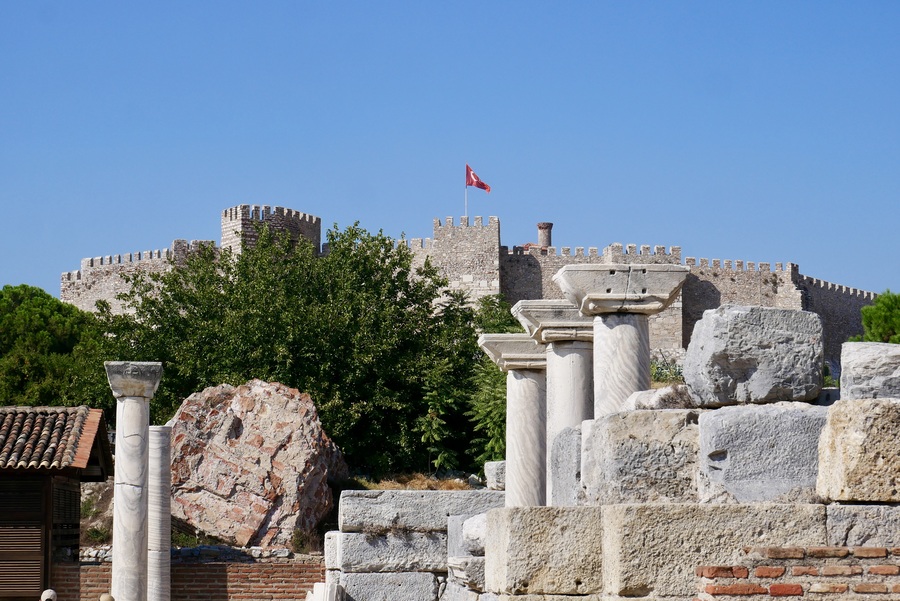
You can access the fortress as part of your ticket to the Basilica of St John in Selçuk.
Isa Bey Mosque
The Isa Bey Mosque is a prime example of Seljukian architecture in Turkey. Built by a Syrian architect in honor of Aydinid Isa Bey, it was modeled after the Grand Mosque of Damascus. In subsequent centuries, the Seljuks also used the mosque as a Silk Road caravanserai.
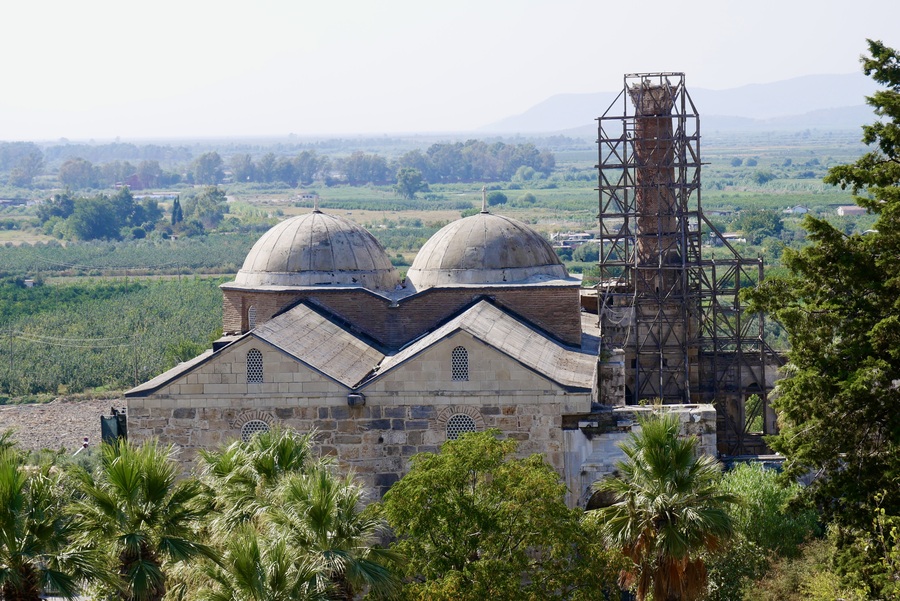
When we visited Selçuk, we found that much of it was under construction, including its minaret.
The Temple of Artemis
Not much remains of the Temple of Artemis at Ephesus. The legendary temple—one of the Seven Ancient Wonders of the World— was once a magnificent tribute to the goddess Artemis, protector of fertility and the hunt.
Built around 550 BC, the temple once featured over 120 marble columns, each standing 60 feet tall.
Today, only one pieced-together column still stands.
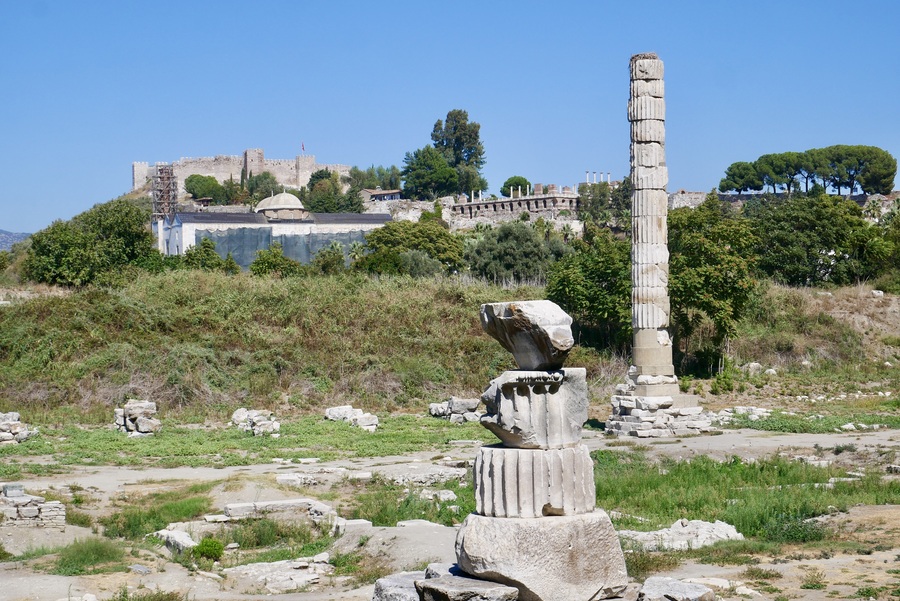
The Pyramids of Giza are the only remaining ancient wonder. Some wonders (the Hanging Gardens of Babylon, the Colossus of Rhodes and the Statue of Zeus in Olympia) live on only in legend and history books. Others, like the Temple of Artemis, the Lighthouse of Alexandria, and the Mausoleum of Helicarnassus in Bodrum lie in ruined fragments.
Based on what remains today, it is nearly impossible stand in front of the Temple of Artemis’ scattered stones and imagine the ancient wonder in all its grandeur. It makes you realize the importance of preserving sites like Ephesus for future generations.
Sirince Town
Just down the road from Selçuk, you’ll find a quaint village nestled in rolling hills. The wonderful little village of Sirince reminded me architecturally of Berat in Albania, with its white, window-filled houses.
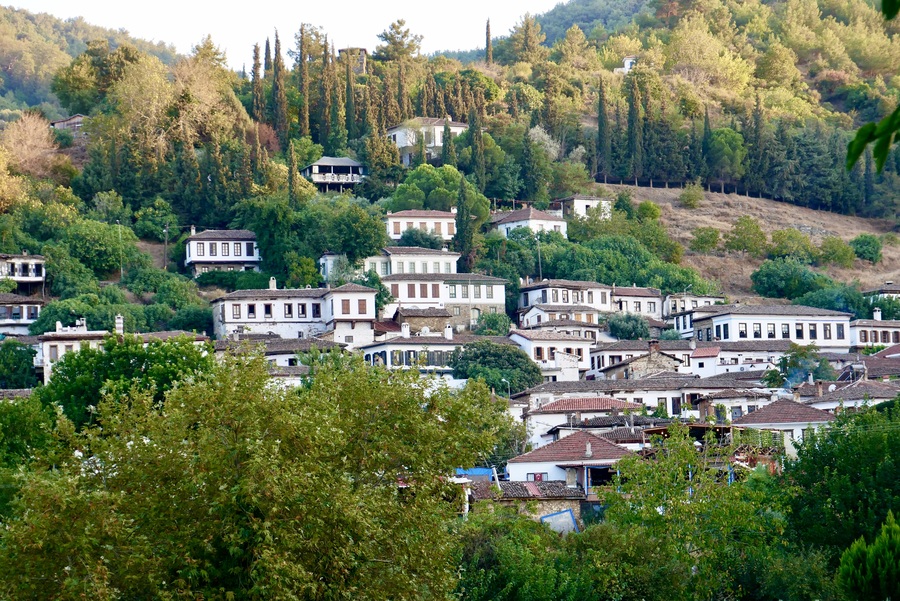
Sirince was once called Cirkince (ugly). The name was specially chose to deceive people from moving to the village. But the quaint hillside town is anything but ugly.
As you walk down the streets of Sirince, you’ll find tons of wine shops, souvenir kiosks, quaint cobbled lanes, and historical Ottoman homes.
Early christians founded Sirince in the first century AD. The village stayed as a Greek Orthodox settlement until the exchange agreement between Republic of Turkey and Greece in 1924.
House of the Virgin Mary
The House of the Virgin Mary was discovered in the 19th century, based on alleged descriptions by the Roman Catholic nun and visionary, Anne Catherine Emmerich.
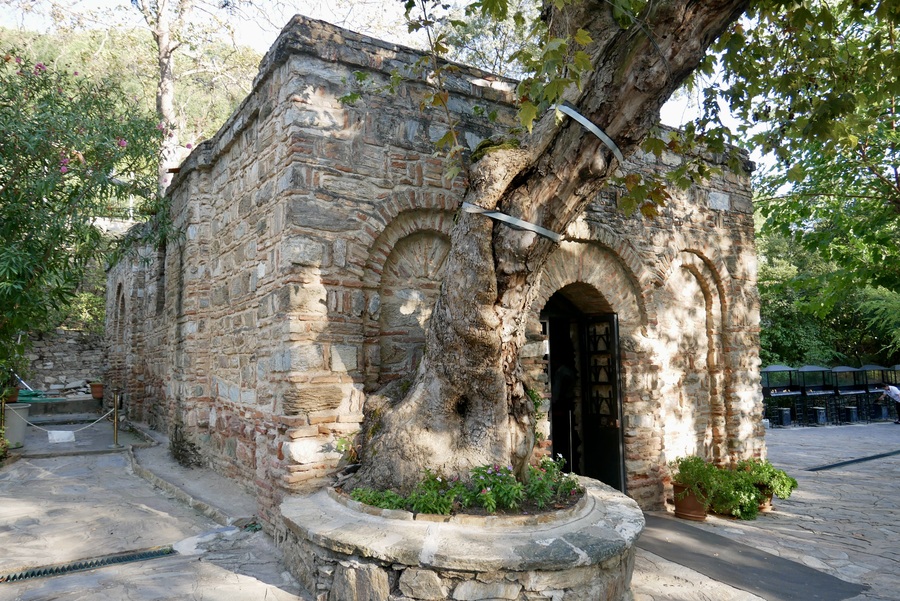
While the Catholic Church never confirmed the authenticity of the house, the site has nevertheless become a tourism magnet for religious devotees. Pilgrims flock to the house based on the belief that Mary, the mother of Jesus, lived out her final days within its walls.
In all honesty, at 14 euros per person, we found the House of the Virgin Mary to be overpriced. Perhaps people traveling to the location for pilgrimage reasons would feel otherwise.
Where to Stay near Ephesus
Ephesus Tours
We navigated Ephesus and its surroundings easily with a rental car. Having a car gave us the flexibility of visiting Selçuk’s towns and monuments at our own pace.
If you do not have access to your own means of transport, you can rely on tours, taxis or minibuses for getting around. A private tour that includes Ephesus and the House of Mary is both affordable and convenient. For a deeper look at the area’s religious sites, a biblical tour of Ephesus brings you to the world-class ruins, the Temple of St John, and the House of the Virgin Mary.
You’ll also find half day tours of Ephesus that cater to cruise ship tourists arriving in Kuşadası Port.
****
Ephesus’ remarkably preserved ruins—from the majestic Library of Celsus to the opulent villas and remnants of early Christian history—offer visitors a glimpse into the once-great city.
As one of the most iconic archaeological sites on Earth, Ephesus continues to stand as a testament to the enduring legacy of Greco-Roman civilization.
In the present day, only 20% of the site has been uncovered.
Who knows what other cultural and historical riches will be unearthed in future excavations.


